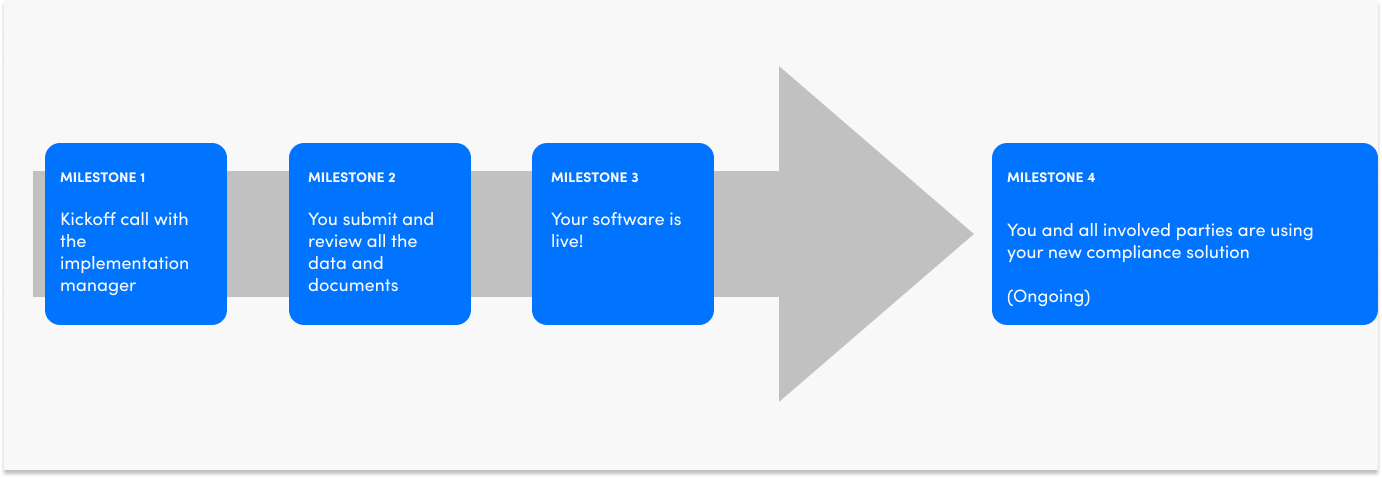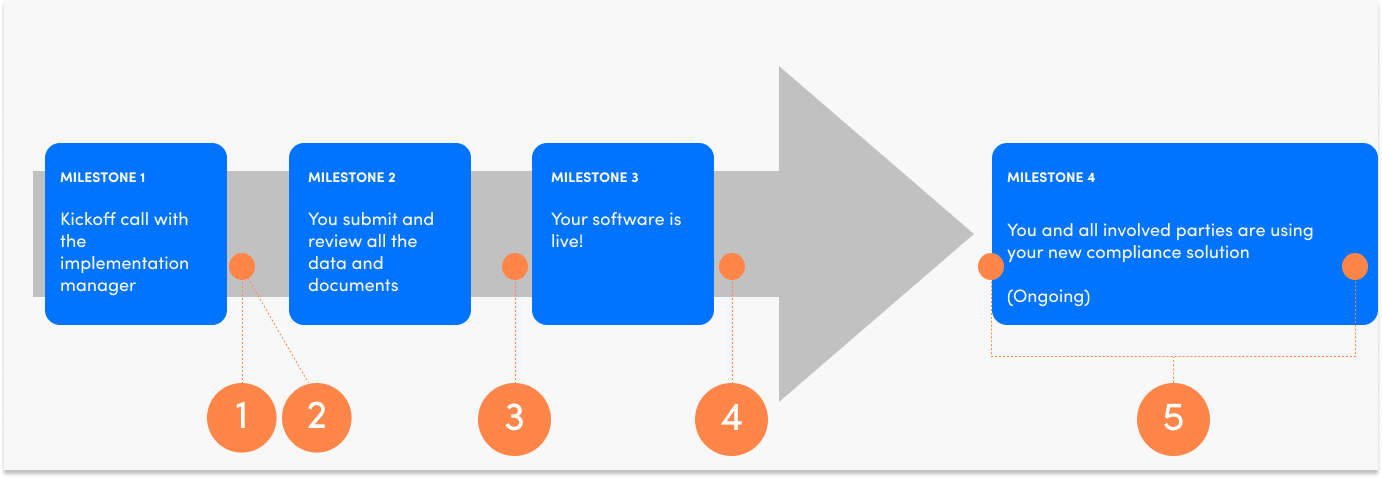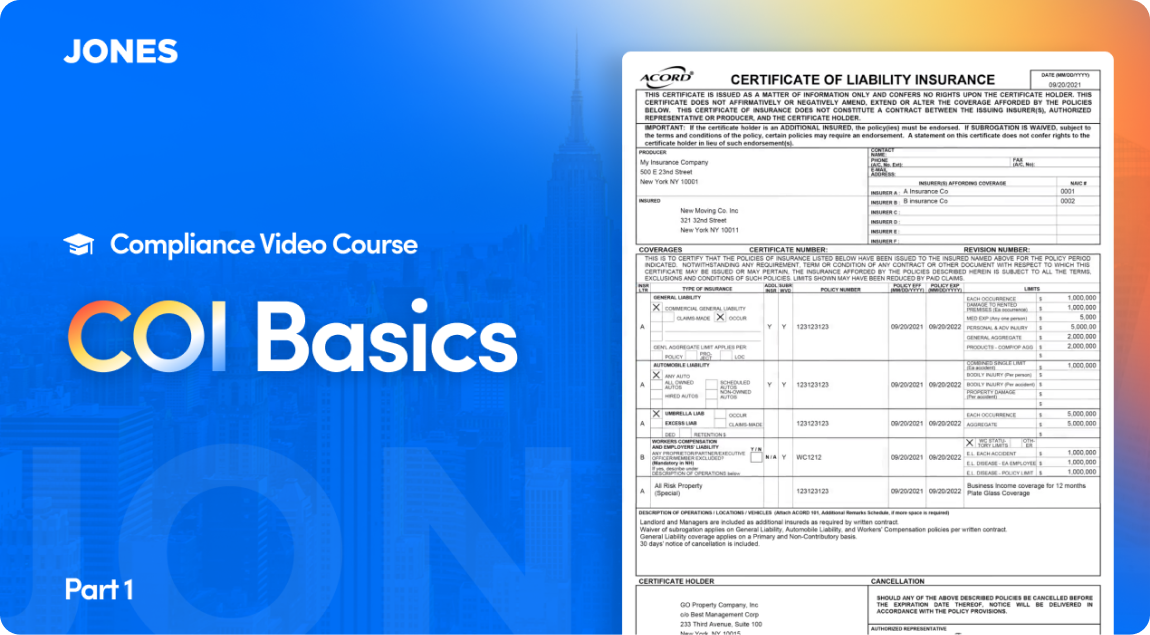There are two main reasons why introducing a compliance solution upsets tenants even if the implementation process went smoothly.
Reason #1: New, error-proof COI audit is too meticulous
This is the ultimate paradox of getting a compliance tool that actually conducts a proper documentation review. It is too good, it’s annoying.
Your tenants had never been held to such high standards.
Approximately 30 percent of our clients admit that when they were reviewing COI documentation in-house, they were primarily focused on expiration dates.
When the Jones team conducts an initial COI review for new clients, the compliance rate for their tenant documentation is averaging 2 percent.
It means that prior to implementing Jones, most property managers would miss important gaps and make the process easier on tenants while subjecting all involved parties to risk.
The good news is that a compliance solution is supposed to put an end to this and review COIs properly.
The bad news is that tenants perceive this as a negative thing – they were “fine” for years, and now they have to jump through the hoops to provide dozens of updated documents.
Reason 2: Onslaught of emails
The second most common complaint we hear from our clients’ tenants is the volume of emails.
Sadly, this is to be expected. Not only will tenants be receiving emails about their own COIs, but also be CC’ed on emails directed to their vendors.
There will be receiving emails about gaps, reminders, notifications that COIs are in review – the list goes on. All these emails are necessary for communication and for protecting all involved parties from liability if said emails get ignored.
“Hey, Jones, this is all great. But if these downsides are unavoidable, what do we do?”
In short, the answer is these two pillars: 1) Expectation management and 2) Tenant training.
“But what does the concrete, step-by-step action plan look like?”
We are glad you asked.
Implementation of any compliance tool follows specific milestones:
- Kickoff call with an implementation manager to understand your company’s needs
- Setup and review of the system
- The system goes live across your company
- You start using the system

If you are past Milestone 3 and start thinking about how to communicate the change to your tenants, YOU ARE WAY TOO LATE.
Below, we have mapped out all the tactics you can employ to prevent tenant frustration and when you should be employing them.

MILESTONE 1
Right after the kickoff call and while you are working on the system setup:
1. Data Quality
Make sure all the documents you provide are correct and up-to-date. Sometimes, tenant leases contain irrelevant information such as Auto policy limits. If you manage a class A office building, this requirement might not be important, so it should be waived automatically.
2. Strategic communication to tenants.
Here is what you should communicate to them:
🎯 What is about to happen and why:
Notify them that you have started implementing a compliance solution that will help protect everybody from risk.
🎯 What to expect in the short term:
Emphasize that there will be a compliance rate curve. There will be a thorough audit of all records and most of them might come in non-compliant. This means that there will be a hard push to resolve the gaps and get the compliance rate up, but it will only be done once. After that, you will just be updating COIs as they expire, and that will be much easier.
🎯 What a tentative timeline looks like:Tell them when the system is about to go live, when to expect first COI requests, and how long it might take to get most of their COIs compliant.
🎯 What’s in it for them:A higher compliance rate is not a tangible benefit for tenants. Tell them that the compliance tool will ultimately make it easier for them to help get vendors approved, so the projects will be done faster.
MILESTONE 2
When the setup part is nearing completion and the system is going to go live soon:
3. Tactical communication with tenants (yes, again)
Time for another round of communication with tenants – the tactical one.
Make sure all tenants know exactly what to expect. This, of course, depends on what compliance tool you are using. If the tool is collecting emails on your behalf, teach the tenants everything about the emails, which ones require action and which ones merely notify them of something.
For bonus karma points, teach them (as in – include detailed screenshots) how to create a folder in their email inbox where all compliance-related emails can go.
Finally, make sure you have the correct point person to address all the COI-related communication. It might be an office manager but sometimes, it is actually a tenant’s insurance broker.
MILESTONE 3
When the system goes live:
4. No automation! (Yet)
A great compliance management tool will have an automated feature that allows you to send tenants notifications before their COI is about to expire. Resist the temptation to use it in the first one-two month, until most of your tenants have learned how to communicate with your new compliance solution. (But definitely take full advantage of it once everybody is onboarded, it will save you tons of time).
MILESTONE 4
After you have been using the compliance tool for some time:
5. Pass the benefits forward and communicate wins.
By now, you will start accumulating a collection of compliant vendors. Make those available to tenants! If Joe the plumber is officially compliant to work in your building and has done work for your tenant on the 5th floor, then all other tenants in that building might want to use the same plumber.


